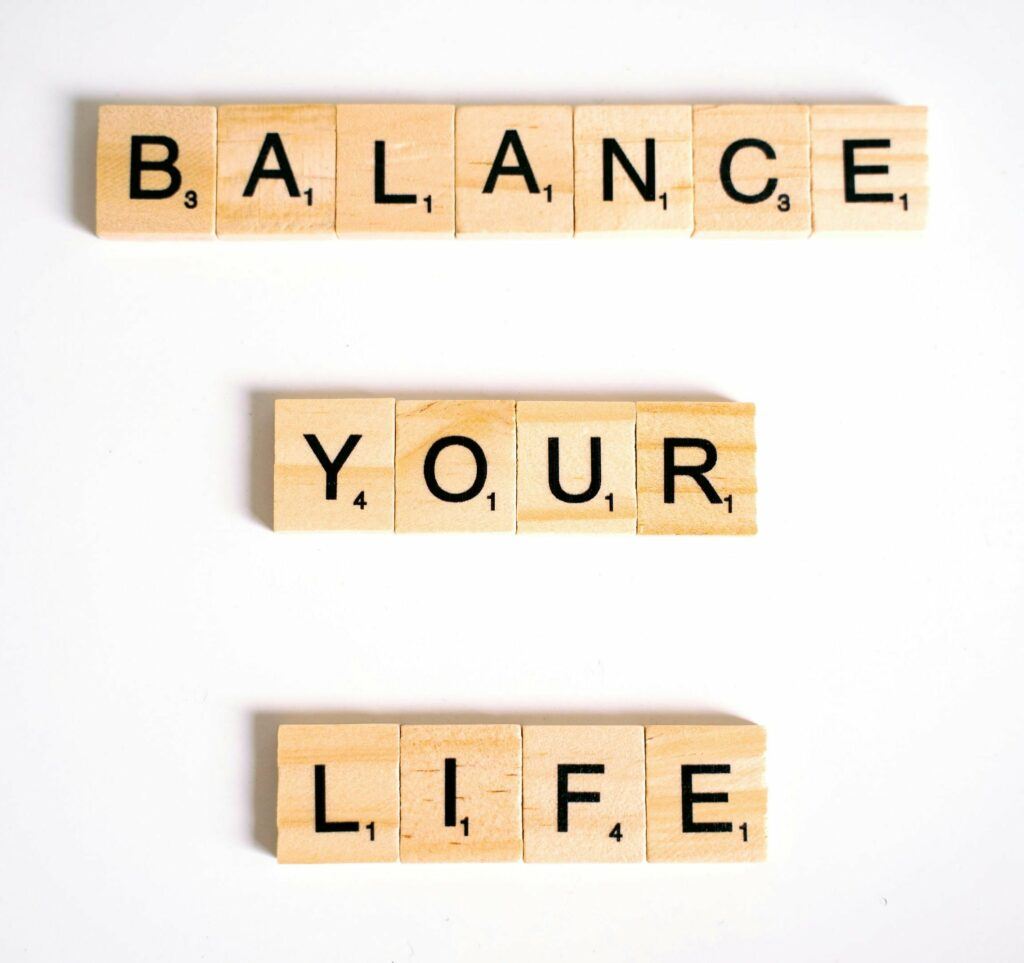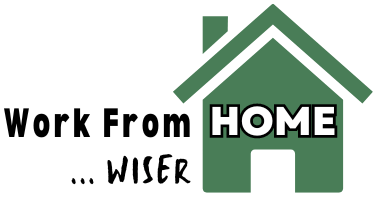Here’s my story about poor professional boundaries.
Though it is only one of several stories I could share about failing to set boundaries within my work and between my work and personal life, it is the latest and the most relevant to working remotely.
If you don’t know already, I am a writer who works from home. Until recently, most of my work was as an independent contractor for one company. It was (and is) lucrative work.
This company’s writing assignments are claimed via an online project board. At first, anytime you logged onto the company’s site, projects were available. The constant availability of projects put me in control of how much and when I worked. I didn’t have to give it much thought.
But over the past year things changed. Projects for remote writers became scarce; they were posted infrequently and disappeared within seconds. To successfully claim a project, you had to be vigilant. ALWAYS VIGILIANT.
Initially, I responded by doing just that – I watched the project board ALL THE TIME. By constantly keeping my laptop screen in sight, I was able to claim assignments, despite their scarcity. I felt like a day trader. When I successfully claimed projects, I was elated; when I missed claiming projects, I felt terrible, defeated. But I was still making good money.
Soon, I stopped going to the gym – I couldn’t be away from my laptop that long. I stopped getting up from my desk. More than once I needed to pee and, instead, held it – what if I missed claiming a project while I was in the bathroom? I ate what I could easily grab, often potato chips. I carried my laptop with me during the evening when I was reading, watching TV, or eating dinner with my partner. With effort, I made myself put my laptop away when my parents visited for the holidays … but I was miserable and anxious the whole time.
This went on for months, taking a toll on my physical and mental well-being. Worse, I paid this price while ignoring the diminishing value of the work I was tying myself to. I could have been focusing my energy and efforts on work that would pay better professional dividends … if not immediately, then long term. But instead, I was completely wrapped up in this pervasive, oppressive, losing proposition.
Resetting the boundaries between my work and personal life began with acknowledging the profound unhealthiness of this situation. I then made changes. I deliberately limited my overall project board watching time and prioritized other work. It was a little scary – like I said, it had been lucrative work … still was when you could get a project.
What happened? My satisfaction with my work and my productivity improved. I became more relaxed and present in my personal life. I am still working on getting back in the gym, but I’m eating more vegetables. I am much happier overall.
Setting boundaries between work and personal life.
• Why setting boundaries is important
• How to know if your work and life are out of balance
• Establishing healthy boundaries
• Maintaining and adjusting your boundaries over time
Why setting boundaries is important
Whether you work in an office or work from home, to be successful you must prioritize work that moves you toward your professional goals. This doesn’t mean you should only ever do work that propels you toward the upper echelons of your chosen profession; that’s not even possible. But you should frequently compare the work you are actually doing to the work you need to be doing. If you are devoting gobs of time to work that is taking you nowhere or in the wrong direction, it’s time to reevaluate your boundaries. Setting boundaries within your job is how you ensure that you have adequate time and resources to focus productively on the right work.
What do I mean by “professional goals” and “success?”
I am no best-life-ever guru. By “professional goals” and “success” I simply mean that you need to have some idea of your "career path." Of where you want the work you do daily to take you. Of what you want it to add up to. The specifics are up to you or, if you work for a company, partly up to you and partly up to them.
Regardless of your professional goals, or what success looks like to you, the preceding paragraph remains true. Be mindful of the work you are actually doing and make sure it is the work you need to be doing to succeed in achieving your professional goals.
Don't slide down the slippery slope of taking on additional responsibilities that don't align with your job description. Don't let your workday be consumed with tasks that don't align with your professional goals.
Boundary setting (or failing to do so) doesn’t only happen within your work; it happens between your work and your personal life. Set boundaries between your work life and personal life to improve your work-life balance.
What is work-life balance?
Despite its popularity in public discourse and among companies proclaiming their commitment to employee wellbeing, there is not an agreed upon definition of work-life balance. Formal development of a theory of work-life balance lags behind its widespread use. Some scholars describe the interface between our work and non-work activities as a competition for finite resources. Others as an enriching expansion of roles.
Bearing in mind that there is no universally agreed upon definition, let’s consider work-life balance as defined by Wikipedia and the Cambridge Dictionary. First, the more expansive definition given by Wikipedia:
In the intersection of work and personal life, the work–life balance is the equilibrium between the two. … A work–life balance is bidirectional; for instance, work can interfere with private life, and private life can interfere with work. This balance or interface can be adverse in nature (e.g., work–life conflict) or can be beneficial (e.g., work–life enrichment) in nature.
And now, the Cambridge Dictionary, which, clearly leaning toward the “finite resources” theory of work-life balance, defines work-life balance as:
the amount of time you spend doing your job compared with the amount of time you spend with your family and doing things you enjoy
Whether we work in a conventional office or remotely from home, we ALL wrestle with the challenge of achieving a well-balanced integration of work-life and personal-life. While working from home can provide an opportunity to establish a better balance, it is not balance in itself. Indeed, working from home can further blur boundaries between professional and personal spheres.
Without clear boundaries between your work and your personal life, a good work-life balance will be hard to achieve … no matter where you work. Without boundaries, you may not even recognize when your work-life balance is out of whack.

How to know if your work and life are out of balance
How do you know if your work-life balance has become unbalanced?
Let me illustrate with a scene from “Coal Miner’s Daughter,” the biopic about Loretta Lynn starring Sissy Spacek as the legendary country singer, a role for which Spacek won the 1981 Best Actress Oscar. (Have you seen the movie? If you haven’t, you should.)
Toward the end of the movie – I promise, this won’t spoil it for you – a physically and emotionally exhausted Lynn takes the stage for a concert. The band behind her begins to play. She holds her microphone but doesn’t sing. Then she waves the band silent and speaks to the audience:
I had something I wanted to tell y’all tonight. But Doo, he don’t want me to say nothing. But I can tell you, friends, cause you wouldn’t be here if you didn’t care about me.
See, things is moving too fast in my life. Always have. I mean. one day I was this little girl. The next day I was married. Next I was having babies. Next day I was out here singing for y’all.
She finishes, recalling advice from her friend, the also legendary country singer Patsy Cline:
Patsy’s always saying, ‘Little girl, you got to run your own life.’ But my life’s running me.
Then, supported by two members of her band, she walks to the edge of the stage, collapses, and is carried off by her husband, Doolittle (“Doo”).
I have seen “Coal Miner’s Daughter” many times, though not recently. Yet, over the (oh my GOSH!) 40-plus years since the film debuted, that line …
‘Little girl, you got to run your own life.’ But my life’s running me.
… comes to my mind when I feel my life, or some part of my life, has breached healthy boundaries and taken control.
You don’t have to be an iconic singer collapsing on stage. Do work emails interrupt your family dinners? Is your laptop a constant companion? Do you lack energy for family or personal pastimes after your workday has ended? Are you feeling stressed, burned-out, or unhappy? If you feel like your life is running you and not the other way around, it’s a good bet that your work and life are out of balance.

The consequences aren’t purely emotional; your mental and physical health can take a hit. In a 2023 paper published in the International Journal of Environmental Research and Public Health, researchers from The Cardinal Stefan Wyszynski National Institute of Cardiology in Poland summed up the negative consequences of poor work-life balance as follows:
Among the negative consequences of low work–life balance are worsening physical and mental health. There are two probable factors that cause low work–life balance to contribute to worsening health: stress and poor time management. Conflicting demands of occupational work and personal roles lead to stress as they disrupt the balance between the individual and his or her environment. In turn, long-term stress leads to physiological processes damaging particular parts of the body or systems and, consequently, promoting physical disorders and diseases.
Do you feel like your life is running you? If so, it’s time to recalibrate your boundaries.
Establishing Healthy Boundaries
Setting boundaries within your work and between your work life and personal life is fundamental to professional success and overall health and happiness. That doesn’t make it easy.
First off, there are different types of boundaries to reckon with. Boundaries may be physical, mental, or emotional. Let’s briefly consider each within the context of working from home.
Physical boundaries. When you work from home a common physical boundary would be the boundary that separates your designated workspace from your living area. If you don’t have the space for a home office, wearing headphones not only helps you block noisy distractions but also serves as a physical indicator to others that you are working.
Mental boundaries. Establishing a routine that clearly defines the start and end of your workday is a good way to set mental boundaries when working from home. When you are working setting your devices to “Do Not Disturb” or unsubscribing from non-essential work-related notifications can provide a different sort of mental boundary, helping you maintain focus.
Emotional boundaries. The absence of office mates might make setting emotional boundaries easier as you won’t be exposed to their bad moods and negativity. But you still have housemates, yourself, and the emotional demands of your personal life to contend with.
For me, emotional boundaries are the toughest. Be kind to yourself and take a look at my article “Staying Focused and Avoiding Procrastination When Working From Home,” for my suggestion for staying productive in the face of emotional boundary breakers.
Now that you understand different types of boundaries, here are some tips to help you set them firmly in place.
Identify what boundaries are important to YOU
Begin by identifying what boundaries are important to YOU. What are your personal and professional values and goals? What areas of your work and life need the most protection? Create a plan tailored to your needs. That includes self-care. It’s hard to do anything well if you are falling apart. (Am I right Loretta Lynn?)
You do have to remember that you are not establishing boundaries in a vacuum. For your boundaries to function effectively, you must take into consideration the priorities and boundaries of others – your family members or, if you are a remote worker, your company and coworkers. With understanding of and respect for the desires and limits of others, set your boundaries and then keep your commitments to yourself.
Regularly reflect to ensure that you are tending to the things in your work and life that matter most. Remember – just as I had to – that establishing healthy boundaries is not just about bracketing what you want and need to do. It is also about knowing what you need to stop doing. Period.
Know your limits
Establish a daily work routine with clear starting and ending times. Turn your computer off at the end of the workday. Close your office door if you have one.
Within the framework of your workday, set yourself a realistic and finite number of activities to complete. Determining what’s realistically achievable may take a little practice and that’s okay. Try starting with at least three and not more than six daily tasks. Prioritize them and complete them in order. If you finish your entire list before the end of your workday, consider your workday a success.
If you finish with time to spare, do ONE MORE work-related task, but only one. (Otherwise enough will never be enough.) If you finish your ONE added task with time to spare, reward yourself by doing something that recharges your batteries … you over-achiever!
If you are constantly completing your work early, you should reevaluate what you are capable of accomplishing.
Assert your limits
Clearly communicating your limits is essential to maintaining boundaries. Have conversations with colleagues, clients, and family members expressing your working hours and availability. Communicate how much work you are able to take on, professionally and personally.
In all matters that involve communicating with clients or coworkers don’t forget to observe the etiquette and boundaries of professional relationships even if – perhaps especially if – you are working from home. You may be working in your pajamas, but you are not having a pajama party. Maintaining healthy boundaries between your personal and professional life means keeping professional relationships professional.
Asserting your limits can also mean asking for help. This could mean asking a co-worker for help with a project or it could mean asking your family to pick up some domestic slack. In my case, it often means asking Walmart+ to bring my groceries to me, saving me a trip to the store.
Maintaining and Adjusting Your Boundaries Over Time
Upholding the boundaries we set for ourselves can be difficult. Sometime the biggest saboteur is the guilt we feel about saying “not now” or “no.” Remember that maintaining work-life boundaries is not a selfish act. It’s a necessary practice that nurtures your career and sustains your health.
Use digital tools to automate boundary reinforcement
You don’t want to have to relearn and relitigate boundaries daily. Use technology to ease the strain of constantly having to remind yourself and others of your boundaries.
Calendar apps can visually block out personal time. Email autoresponders can inform others of your non-working hours. Use “Do Not Disturb” modes on devices to your advantage. Unsubscribe from non-essential work-related notifications.
Let technology carry some of the load until others learn and you master your boundaries.
Be consistent BUT don’t be rigid
Setting boundaries is just the beginning. Now you must practice them. Like any good habit, consistently adhering to your boundaries is key.
On the other hand, work and life are dynamic. Sometimes work pressures intensify or family circumstances require attention. Sometimes a unique opportunity presents itself and your gut says, “Go for it.” So, go for it. It’s okay to adjust your boundaries temporarily. But always plan to re-establish them.
Over time, if you find that the limits you have established are no longer serving you well, reevaluate them and adjust them to suit your new personal and professional demands.
Final Thoughts
If you’re still struggling with setting boundaries, don’t hesitate to reach out to others for guidance. Get advice from a trusted friend, a career mentor, a life coach, or even a therapist.
Finally, don’t turn your quest for perfect boundaries and the perfect work-life balance into its own source of stress. Have realistic expectations. Even with well-thought-through, robust boundaries firmly in place, an ideal work-life balance is a unicorn. Just as you glimpse that mythical creature your life and work will change, and your unicorn will disappear.
Do you have your own story about setting professional boundaries? Do you struggle with work-life balance? Do you simply want to swap quotations from “Coal Miner’s Daughter?” (I’m down for that!) PLEASE SHARE in the comments below.

